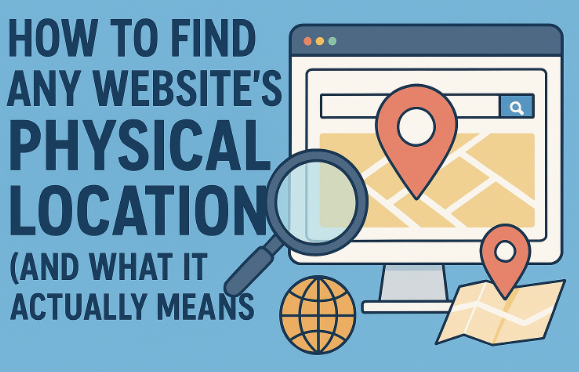The Fun of Learning: Animated Movies and Learning Games for Kids
In today’s fast-paced digital world, learning doesn’t have to be a chore. Kids learn best when they have fun and learn at the same time. Two of the best things in this toolbox are animated movies for kids and games that teach them things. If you use these tools the right way, they can help kids learn about morals, social skills, creativity, curiosity, and basic schoolwork. CSTaleem.com wants to check out these media so that parents, teachers, and caregivers can use them to help kids become well-rounded adults.
Why Kids Should Watch Animated Movies
There is more to animated movies than just fun characters and bright colors. They are also great ways to share culture, teach values, tell stories, and learn about feelings.
1. Seeing things helps you learn and remember
Kids are naturally drawn to things that are bright, moving, and have a lot of personality. Animated movies tell stories with pictures, words, music, and action that stay with you. Characters face problems, make decisions, or help others make abstract ideas like bravery, kindness, and not giving up real.
2. Being able to understand and care about other people
When kids see characters go through happiness, sadness, fear, or victory, they can better understand and deal with their own feelings. Kids learn how to feel for other people when they see them happy or sad. A lot of the time, kids’ animated movies have moral problems in the plots. These help kids learn how to be nice, tell right from wrong, and see things from other people’s points of view.
3. Language and communication skills
Good animated movies teach you new words, phrases, and ways to talk. Kids learn to speak and understand better when they hear people talk in English or their native language and repeat catchphrases. For families that speak more than one language, cartoons and movies are a good way to get the languages to work together.
4. Understanding and using your imagination in other cultures
Animated movies often tell stories from different cultures, history, science fiction, fantasy, or even real life. They help kids think outside the box and learn about other cultures that are different from their own. This makes people more open, accepting, and interested.
5. Values and Beliefs
Many animated movies for kids are made on purpose to teach them things like how to be brave, honest, responsible, and work together. Movies are a gentle way to teach values without being too preachy. Kids learn by watching characters make mistakes, fix them, and learn from them. This kind of modeling can be very helpful.
How Games That Teach You Things Help You Learn More
Kids just watch, listen, and wonder when they watch animated movies. On the other hand, educational games let kids take part. They change to fit each learner, often in ways that work with their speed and style. They also challenge and reward them.
1. Active Involvement and Feedback
Games that teach give you feedback right away. Did you get it wrong? Try again. Can you solve a puzzle? Get a prize. This way of learning through trial and error works. It makes kids feel good about themselves and lets them see progress right away.
2. Solving Problems and Cognitive Skills
Many educational games have puzzles, patterns, logic, sequencing, memory, or strategy as their main parts. Playing games helps kids get better at planning, thinking critically, and solving problems. These are basic skills that can help you in school and in life.
3. Tailored Learning Paths
You can make games harder or easier depending on how well a child does, so they can change to fit their skill level. This stops you from getting bored or angry. The game can move on to harder problems if the child already knows how to do basic math. It helps them learn if they are having trouble.
4. Learning at your own pace and staying motivated
Kids are more likely to want to learn when it feels like play. Many educational games have levels, badges, and rewards. These give kids small goals to work toward that keep them interested. Kids can play at their own speed, so they can go back to parts of the game that are hard for them and move quickly through parts they already know.
5. Talking to people and working together
Many educational games these days are for more than one player, require players to work together, or let players share. Kids learn how to talk to each other, make deals, and be a leader when they play games with other kids. Some games help people work together, share their problems, and learn from each other, which is good for their social and emotional growth.
Combining Animated Movies for Kids with Educational Games
When you use these two tools together in a smart way, they can do some really cool things together.
- Reinforcing Ideas: A child watches an animated movie about protecting the environment and then plays a game where they can plant trees or fix ecosystems in the game. This makes learning real.
- Learning Through Stories: Kids can see characters and stories in animated movies, and they can also be a part of those stories in educational games. They can help things go better, decide what the characters should do, or figure out how to fix things. This makes lessons feel more real.
- Parents and teachers are often worried about how much time kids spend on screens. You can watch a movie for a little while and then play a game to split your time between the two. This method helps people get the most out of their food without realizing it, which stops them from eating too much.
How Parents & Teachers Can Choose Good Content
It’s important to pick the right animated movies and educational games for kids so they can reach their full potential.
- Age-appropriate: Check that the content is right for the child’s age, not just how hard it is, but also how emotionally mature they are. If a movie is too scary or a game needs fine motor skills that are too hard for the child to get, they might get mad.
- Not just for fun, but also for learning math, language, science, social studies, ethics, and other subjects, look for movies and games. For example, choose movies that make you think about moral issues or show you different cultures, and games that teach you how to read, count, code, or solve problems.
- Diversity and good role models: Characters should be honest, brave, kind, and curious. People from different cultures, backgrounds, and points of view also help everyone feel welcome.
- Not too much stimulation: Bright colors, fun music, and effects are all fine, but they should help the story or learning, not get in the way of it. A story that is calm, has a slow pace, and has important content often has a bigger effect.
- No ads and a safe environment: Make sure that online educational games are safe by having few or no ads, a safe environment, and settings that protect your privacy. Pick movie providers you can trust that don’t have bad content.
Tips for Making Learning a Part of Your Daily Life
For the best results, here are some ways to make animated movies and educational games a regular part of a child’s life:
1. Learning with a Theme for Weeks
Pick a theme, such as “Space,” “Oceans,” “Friendship,” or “Culture,” and then find an animated movie for kids that fits that theme. Play games that go along with the theme, like ocean trivia or a space simulation. At the end of the day, talk about what you learned.
2. After the Movie Talks
After the movie, ask questions that don’t have a clear answer, like “What would you have done if you were the hero?” or “What did you learn about being kind?” or “How did the character solve their problem?” These help kids remember and think about what they’ve learned.
3. Time to Play with a Goal
Set aside time for “educational games” instead of just letting them play. You could read or solve problems for 20 to 30 minutes a day. Keep track of how far you’ve come and celebrate when you reach a goal.
4. Use tools that work whether you’re online or offline
Digital animated movies and online games are fun, but don’t forget about stories, drawing, paper, and role-playing. After watching a movie, kids can draw pictures, write their own endings, or act out the parts of the characters. This helps them be creative and learn.
5. Taking part and modeling
It helps when teachers and parents are involved. Kids learn better when you do things with them, like watch animated movies or play educational games. People can talk to each other and get to know each other better.
Last Thoughts
Animated movies for kids and educational games are great ways to learn in a world full of screens and digital content. They can get kids’ minds going, teach them important skills, instill values, and make learning fun instead of a chore. If we choose the right tools and use them for a good reason, they can change the way kids learn about the world.
Combining animation and interactive games can help young learners develop the skills they need to learn for the rest of their lives: curious minds, caring hearts, and strong voices. This is something that parents, teachers, or community members can do to help.
CSTaleem.com can help you along the way by giving you stories, tips, and information that will help you find the best animated movies and educational games for kids and help each child reach their full potential.















3 Responses
It is truly a great and helpful piece of info. I’m satisfied that you just shared this helpful info with us. Please stay us informed like this. Thank you for sharing.
An impressive share, I just given this onto a colleague who was doing slightly evaluation on this. And he actually purchased me breakfast as a result of I found it for him.. smile. So let me reword that: Thnx for the deal with! But yeah Thnkx for spending the time to discuss this, I feel strongly about it and love studying more on this topic. If possible, as you develop into experience, would you thoughts updating your weblog with more particulars? It is extremely helpful for me. Huge thumb up for this blog submit!
Greetings! Very helpful advice on this article! It is the little changes that make the biggest changes. Thanks a lot for sharing!